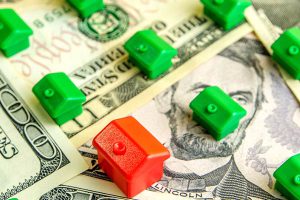6 Costs That Await New Homeowners
Enthusiastic first-time homebuyers frequently gloss over costs that gobble budgets and overwhelm paychecks. Don’t set yourself up to watch TV on your laptop on the floor after you move in. To enjoy your new home from day one, be sure to count all the costs that go along with it. Here are six important ones.
- Real estate taxes. Rates vary widely around the U.S. by state and by county. Say a home is worth $200,000. If you intend to live in a high-tax state like Texas, plan to pay 1.8% of your home’s value, or around $300 a month. Right across the border in Louisiana, with the nation’s lowest average, property taxes claim a mere .17% of home value—less than $30 a month. Missouri and Massachusetts post median rates of .82%, so property taxes on a $200,000 home add around $137 to monthly budgets.
- Utilities. Heat in winter, air conditioning in summer, lights and Internet access year-round—utilities can run up a steep tab. The WhiteFence Index tracks utility costs in 21 U.S. cities, using data from thousands of orders by its online customers shopping for these essential home services. In September 2009, it estimated that Americans paid, on average, $270 a month for home utilities: $122 for electricity, $58 for television, $34 each for telephone and high-speed Internet access and $22 for natural gas. Some citizens fared better than others: Baltimore residents tipped the scale at around $374 a month for their utilities. Los Angelinos paid the least: around $190. Add separate fees for new electrical or cable outlets and new digital access boxes, and the tab jumps even higher. For more data on utility costs in other cities, visit the WhiteFence website.
- Home insurance. The typical U.S. homeowner paid $804 in homeowner’s insurance premiums in 2006, the most recent year for which there are hard numbers. This expense may vary somewhat by state, home value, claim history and even ZIP code. Shop around for the best prices from top-rated insurance companies. An umbrella liability policy (also called a personal excess liability policy) protects homeowners if a lawsuit exhausts basic policy coverage. These policies are relatively inexpensive, according to the American Bar Association, because homeowners seldom need them.
- Furnishings. You may want to add a few pieces of furniture to sit on, lamps to read by and window dressings for privacy. Advance planning will prevent these items from busting your budget. Avoid the instant splurge that often accompanies moving in, when spending a few hundred dollars seems like a drop in the bucket compared with the home price.
Consider making your first mortgage payment before you hit the mall. Unless you want to finance indefinitely at high interest rates, figure out what it might cost to furnish the house over the next two years and divide by 24 to estimate the impact on your monthly budget. It may be substantial. For example, a sectional sofa for your living room will likely run upwards of $1,200 at a multi-store furniture retailer.
- Repairs and maintenance. It’s likely that something in your new home will need fixing or replacing within the first couple of years. Not a roof or the foundation, which should be the subject of the home inspection, but you would not be the first new homeowner to add an electric circuit board for an appliance or another air conditioner. Peeling paint also may seem less tolerable than when you were house hunting. Conservatively, figure $50 a month in the first year for repairs and maintenance. If no problems arise and you save that money, so much the better. That’s your emergency fund.
- Commuting. Here’s one if your new home means a longer trip to work. Whether you drive farther or use public transportation, there is a cost. A monthly railroad commuter pass between Chicago and suburban Naperville, for example, costs $128.6 (Double that if you’re a working couple.) If you drive to work, even at moderate prices, gas and upkeep can add $100 a month or more to your tab. And if moving to a new home requires a car for the first time or a second car, brace your budget for a purchase or lease as well as insurance.
The list goes on, of course. If a landlord paid for yard care where you used to live, you’ll now need a lawn mower before neighbors lodge a protest. All told—even conservatively estimated—costs above a mortgage can add hundreds of dollars to a new homeowner’s monthly budget.
Lots of everyday expenses contribute to the affordability of a home. First you have to be able to handle the mortgage. But prudent budgets also allow for other likely expenses—from taxes to transportation. Ignore them at the risk of exhausting cash flow and crimping your style. Make sure your first home really is your castle.
Quicken has made the material on this blog available for informational purposes only. Use of this website constitutes agreement to our Terms of Use and Privacy Policy. Quicken does not offer advisory or brokerage services, does not recommend the purchase or sale of any particular securities or other investments, and does not offer tax advice. For any such advice, please consult a professional.


